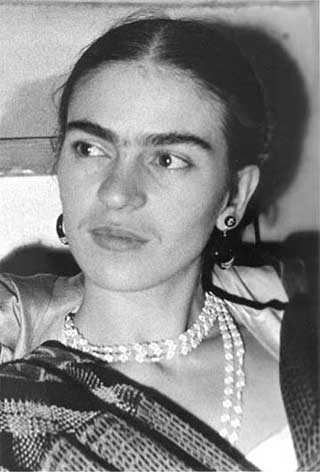
Saturday, July 18, 2009
Judith Leyster

Friday, July 17, 2009
Georgia O'Keeffe

Georgia Totto O'Keeffe (1887 - 1986) was born in Sun Prairie, Wisconsin. She demonstrated an aptitude for art at a young age and went on to attend the School of the Art Institute of Chicago and the New York's Art Student League.
In 1912, Georgia took a teaching job at the Chatham Episcopal Institute. A year later, she applied for and was hired for a teaching position as a drawing supervisor in Texas. But after years of teaching and having almost no time for herself, she decided it was time to devote herself to producing art.
Some of her early drawings were shown by the photographer, Alfred Stieglitz, in his New York gallery. In 1923 O'Keeffe married Stieglitz and began to paint the large, magnified views of flowers for which she is most famous.
O'Keeffe lived and worked in New Mexico for many years where she found inspiration in the dry bones and geology of the desert landscapes.
Late elementary students that are studying American history will be interested in the work of Georgia O'Keeffe.
Project idea: Look at photographs of flowers in magazines and calendars. Choose one and lightly sketch it on watercolor paper. Enlarge the flower so that it fills the entire page and goes off the edges. Use watercolor paint to add color. Add definition and shading to the flower with watercolor pencils.
Frida Kahlo

Her Jewish Hungarian-German father arrived in Mexico in 1891 and married Frida's mother, a devout Catholic of indigenous and Spanish descent.
Kahlo contracted polio at six, which left her right leg thinner than the left, a fact that Kahlo disguised by wearing long, colorful skirts. Some believe that she also suffered from spina bifida.
In 1925, Kahlo was riding in a bus when it collided with a trolley car. She suffered serious injuries in the accident, breaking her spinal column, collarbone, ribs, pelvis, leg, and foot. An iron handrail pierced her abdomen, causing permanent injury to her reproductive organs.
While Kahlo was bedridden during her recovery, she began to paint.
Although she recovered from her injuries and eventually regained her ability to walk, she suffered extreme pain throughout the rest of her life.
This constant pain informed Kahlo's artwork, and was frequently portrayed symbolically in her paintings.
Middle school students and older can understand the themes in Kahlo's self-portraits.
Project idea: Look at and discuss selected examples of Kahlo's self-portraits, including Self-Portrait with Monkeys, 1940. Use multi-cultural construction paper to cut out the head and shoulders for a self-portrait. Add hair and clothing. Cut large construction paper leaves to fill in the background. Students may add other details to their portrait to represent their lives, such as pets or symbols of their interests.
Source for biographical information: Wikipedia
Thursday, July 16, 2009
Grandma Moses

Moses began painting in her seventies after she was unable to continue her work with embroidery due to arthritis. Her paintings were displayed in a drugstore window when they were discovered by an art dealer.
She painted themes that were familiar to her, scenes depicting the rural life of common folk. Many of her paintings show scenes from long ago, such as women gathered together to prepare a holiday meal or children chasing the Thanksgiving turkey in a barnyard. These paintings provide a visual record of the day-to-day activities of early twentieth-century farm life.
Grandma Moses was a prolific painter, producing over 3600 canvasses in the last thirty years of her life. Before her fame, she would charge $2 for a small painting and $3 for a large. Some of her paintings have sold for over a million dollars in recent years. Her winter paintings are reminiscent of some of the known winter paintings of Peiter Bruegel, the Elder.
Primary-aged students or students studying American history might especially enjoy the work of Grandma Moses.
Project idea: Think of a time when you get together with family or friends. Perhaps it is for a wedding, holiday meal, birthday or church potluck. Imagine who would be there, what types of food you would eat, what kinds of activities you would do together, etc. Use markers and crayons to draw the event in the style of Grandma Moses.
Why I'm Here...
During the month of March, which is Women's History Month, I try to teach a unit on one female artist with each grade level. This would include presenting some background information on the artist and then doing an art project with them that reflects the style of the artist.
I am an art teacher with the Harlem Consolidated Schools in Machesney Park, Illinois, USA.



